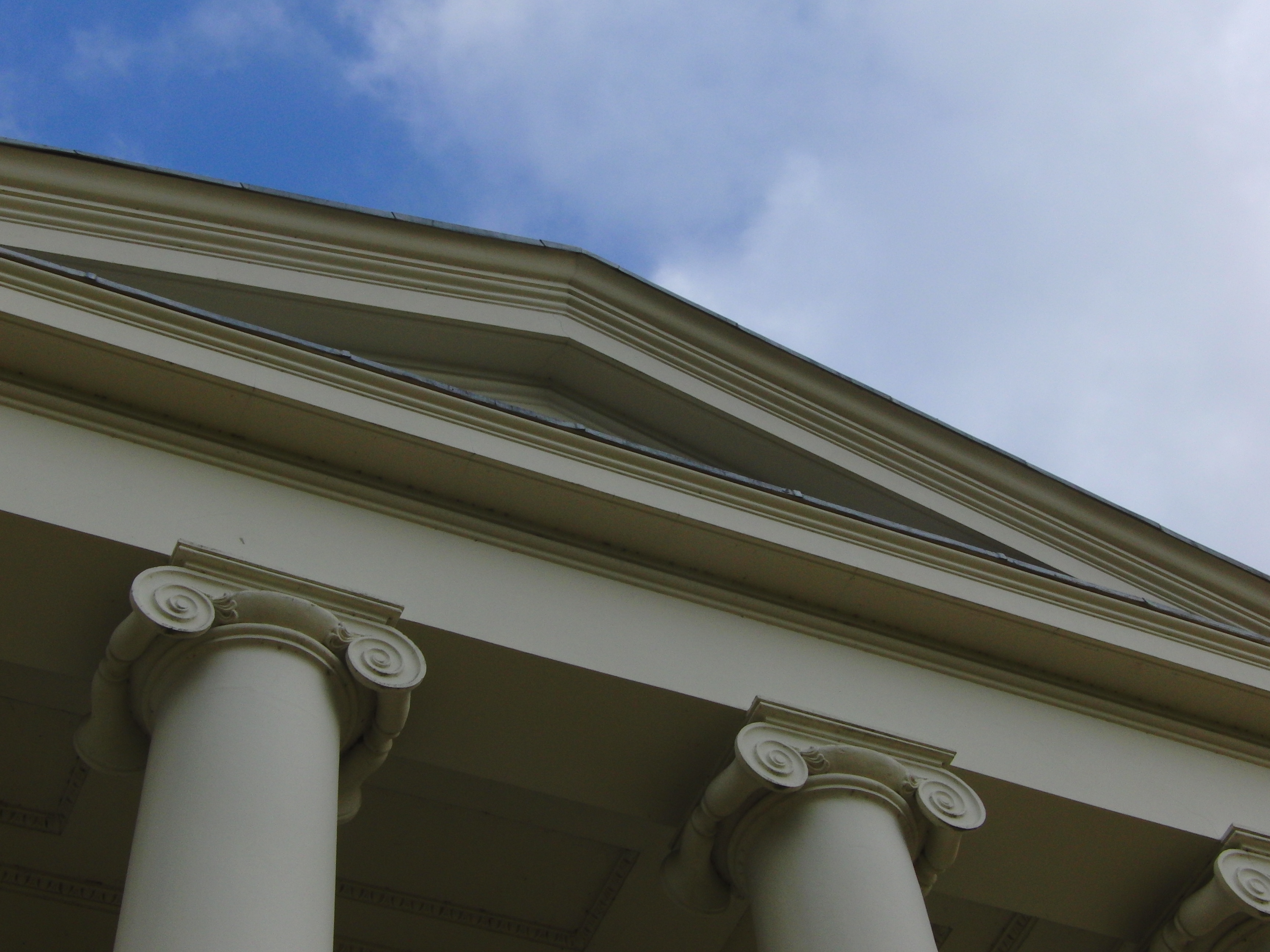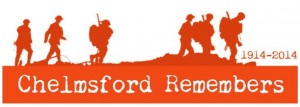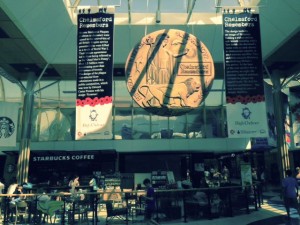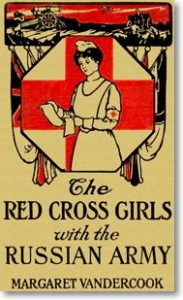Essex at War
We wrote recently about how glorious was the summer of 1914 and how those balmy days before the Great War seemed to reach on into the Autumn. (Revisit the article here…). We were lucky enough to be at the 1st World War commemoration event at Hylands House, sponsored by Essex County Council, on the weekend of the 14th September 2014.
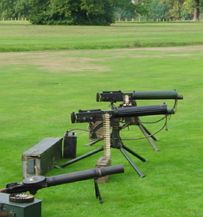
The fields of the estate provided a glorious backdrop for families and groups to enjoy the late sunshine, to listen to martial music from a band on the terrace and to enjoy the military re-enactments and be-uniformed attendants, at a variety of regimental stalls scattered like a canvas billet around the great house.
The inside of Hylands House afforded visitors the chance to meet and greet a variety of historically textured projects from the Essex area. Enjoying views of the landscaped gardens and lawns from the restored windows, of the horse-drawn charabanc and the 574 acre landscape designed by Humphry Repton. Read more about the history of this lovely house here, on the web pages of Chelmsford City Council.
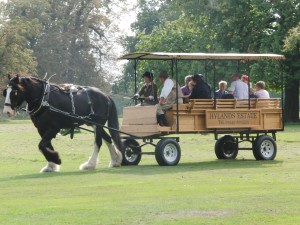
On the first floor of Hylands House that sunny morning were members of project called Chelmsford Remembers.
The Heritage Lottery Fund project, led by Fellows of the RSA, is a history project designed to capture ‘…the history and of Chelmsford and its people during The First World War’.
Below you can see what we discovered, at conversationsEAST, about this great project…
Chelmsford Remembers
The project will have a major exhibition in place, generously supported by High Chelmer Shopping Centre, that will feature the work of project volunteers and to enable residents to see the findings of the research…as well as contribute information about their own family members, we hope.
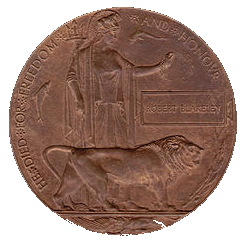
It is intended to to transform the central square of the Centre into a replica trench, with artefacts and displays of Great War material relevant to the area.
The display at the High Chelmer Shopping Centre has a particularly poignant centrepiece. A large Memorial Plaquette, or ‘Dead Man’s Penny’, which was issued to the families of all those service personnel killed as a result of the war.
Tragically, some 1,355,000 placquettes were distributed, consuming some 450 tonnes of bronze in their manufacture. We were lucky to meet with members of the project who gave us permission to use an image of their precious artefact. We thank them.
Would you like to get involved in the Chelmsford Remembers Project? You can.
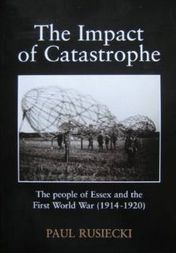
All successful applicants to the project will get a free copy of Dr. Paul Rusiecki’s The Impact of Catastrophe, a book detailing his research into the people of Essex and the impact of war from 1914 to 1920.
You can join the team by making contact with Chelmsford Remembers.
The project is looking for ten volunteer researchers who are passionate about uncovering the past of Chelmsford. The project provides free training and support and will also be involved in the forthcoming Ideas Festival.
Talks were given…
In the Pavilion, adjacent to the main house, the day was spent in listening and watching a variety of talks from researchers and authors on the theme of the war in Essex. The event was sponsored by the Essex Records Office and was chaired and the business of the day guided by Malcolm Noble FRSA. (Malcolm is the Chair of the Eastern Region RSA Fellowship).
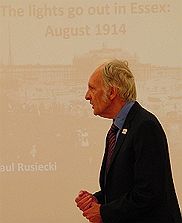
We illustrate below two quick samples of the talks, which were well received by the respective audiences. Providing attendees in the Pavilion with access to new information and insights into the The Great War in Essex.
Stylistically different, the programme afforded the interested listener with a wealth of data, images and reflection on this momentous time in the County.
The Lights Go Out in Essex: August 1914
Dr. Paul Rusiecki delivered a short paper to the morning audience around the emergence of war into the summer sunshine of summer 1914.
Paul’s principal thesis was that ‘…war crept up by stealth on the people of Essex’. He cited Dedham Church Choir, so oblivious to the impending storm, that on the day preceding the announcement of hostilities, ‘…the singers took an overnight visit to Cambridge’.
As further evidence of civil society behaving as normal, there was reflection given during the paper to a strike in the County by agricultural harvest workers. There was significant unrest during August of 1914, with police marshalled and shots fired to suppress the protest. This dispute rapidly came to an end as wages were able to rise as a result of war measures to secure food production, we were informed. Ferment was also current in August 1914 with regard to the Irish Home Rule Bill, with all the consequent fears of uprising.
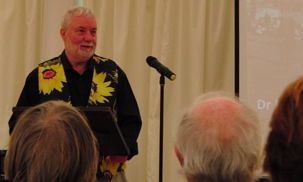
The local Essex press made no mention of the assassination in Sarajevo, but by the end of August 1914 ‘…the cold hand of realism had fallen on Essex’. The air of unreality had dissipated, we were told. The early battles at Mons had led to an increase in the call for conscription in England.
By May 1915, Dr.Rusiecki enlightened us, attitudes to German and Austrians resident in the County had hardened. A shift in mindset driven by the sinking of the Lusitania, air raids over Southend and the publication of the Bryce Report, which detailed atrocities committed in Belgium during the early stages of the war.
![]() (You can discover an animated film from 1918, about the sinking of the liner Lusitania here…)
(You can discover an animated film from 1918, about the sinking of the liner Lusitania here…)
A wonderfully lucid and well paced delivery, we thought.
Mobilisation and Land Defences in Essex
Clive Potter, a local county based historian, gave his audience a delightful visual and data festooned presentation. We were offered a variety of county maps, which showed us both the disposition of troops before hostilities and the numerous training grounds across the Essex landscape.
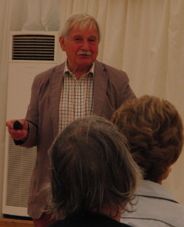
Similarly, Clive was able to reveal the likely landing places for small detachments of ‘enemy’ troops on the Essex coast. These visual elements were supported by notes and the detail from the 1914 UK battle plan, ‘The Land Defense of the United Kingdom (Eastern Region), which gave us detailed exposition on how our defense would be undertaken in the event of invasion.
Detailed maps were offered of inland defenses in the county, including a significant amount of trench works for troops to block advancing enemy forces. This was very enlightening, as we had always, as a ‘lay ‘audience, assumed that trench warfare was the sole remit of mainland European combatants.
Clive completed his image selection with a very interesting range of contemporary images from 1914 of troops in their billets. A strong section was presented on quartering troops under way in Witham and the various early training exercises undertaken in the hinterland of the town.
A refreshing story was told, that made the war in Europe a very local affair. We enjoyed it immensely.
In summary:
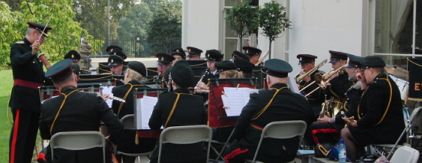
This was a well planned and executed commemorative event for the people of Chelmsford and the county as a whole.
For the projects presented in Hylands House, the talks organised in the Pavilion, as well as the activities in the Park – all created some interest for every visitor.
We understand that nearly a thousand people entered Hylands House to engage with projects and that sixty visitors stayed on for the final talk of the day from Ivor Dallinger on the Stowe Maries Great War Aerodrome.
A great day in the last, lingering days of summer. Thank you.
Images by conversationsEAST, alternative sources as shown
